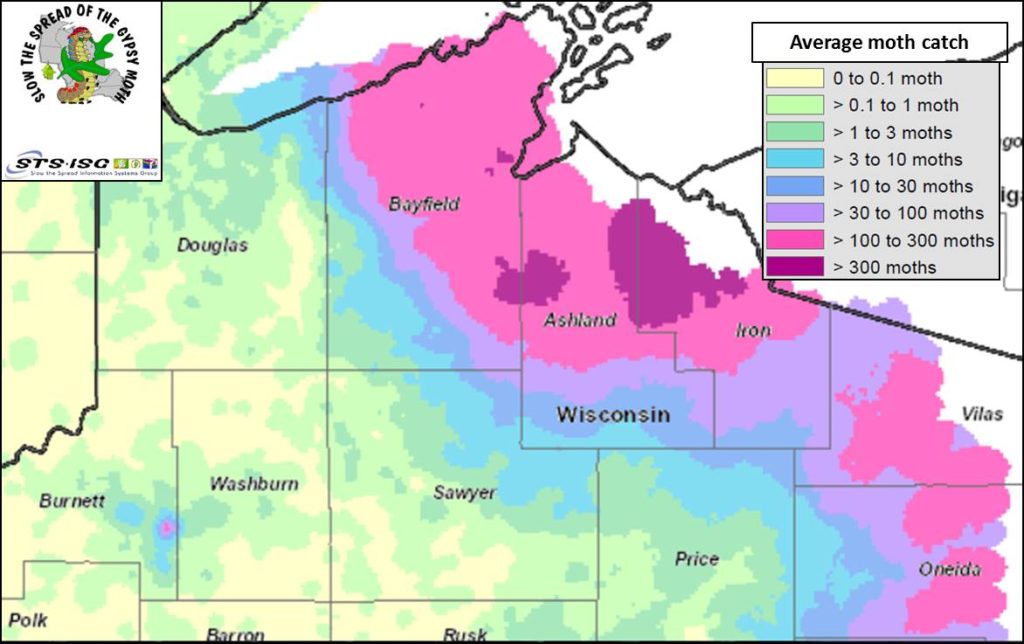
Fig 1. Average gypsy moth trap counts in northern Wisconsin counties. Map adapted from the Slow The Spread Foundation, Inc.
Annual surveys conducted by the Wisconsin Department of Agriculture, Trade, and Consumer Protection (DATCP) indicate gypsy moth populations have increased in several northern Wisconsin counties and by 20% statewide. High moth counts were detected in pheromone traps in Ashland, Bayfield, Burnett (Dewey Township), Iron, Oneida, and Vilas counties, with the highest overall count in Bayfield County (14,354 moths total). Areas with an average catch per trap of 100 moths or more will likely experience damaging levels of defoliation by gypsy moth caterpillars in the following year or years (Fig. 1).
Defoliation can be reliably predicted at the stand level by counting gypsy moth egg masses from August through March before egg hatch; these estimates help determine if preventive measures, such as physical controls, insecticide treatments, or delaying thinning activities are needed until populations collapse.
In recreational and residential high-use areas, physical controls such as sticky bands and burlap barriers may be used to help reduce nuisance and aesthetic impacts from gypsy moths. Aerial treatments are used when gypsy moth populations are high. In managed forests, use of silvicultural techniques may be economically feasible to reduce productivity problems caused by the pest.
Learn more about prevention and management options for your property by consulting with your local DNR forester or regional forest health specialist.
More information about population sampling and management options is available online at www.gypsymoth.wi.gov.
Written by: Paul Cigan, forest health specialist, Hayward. Paul.Cigan@wisconsin.gov; 715-416-4920
